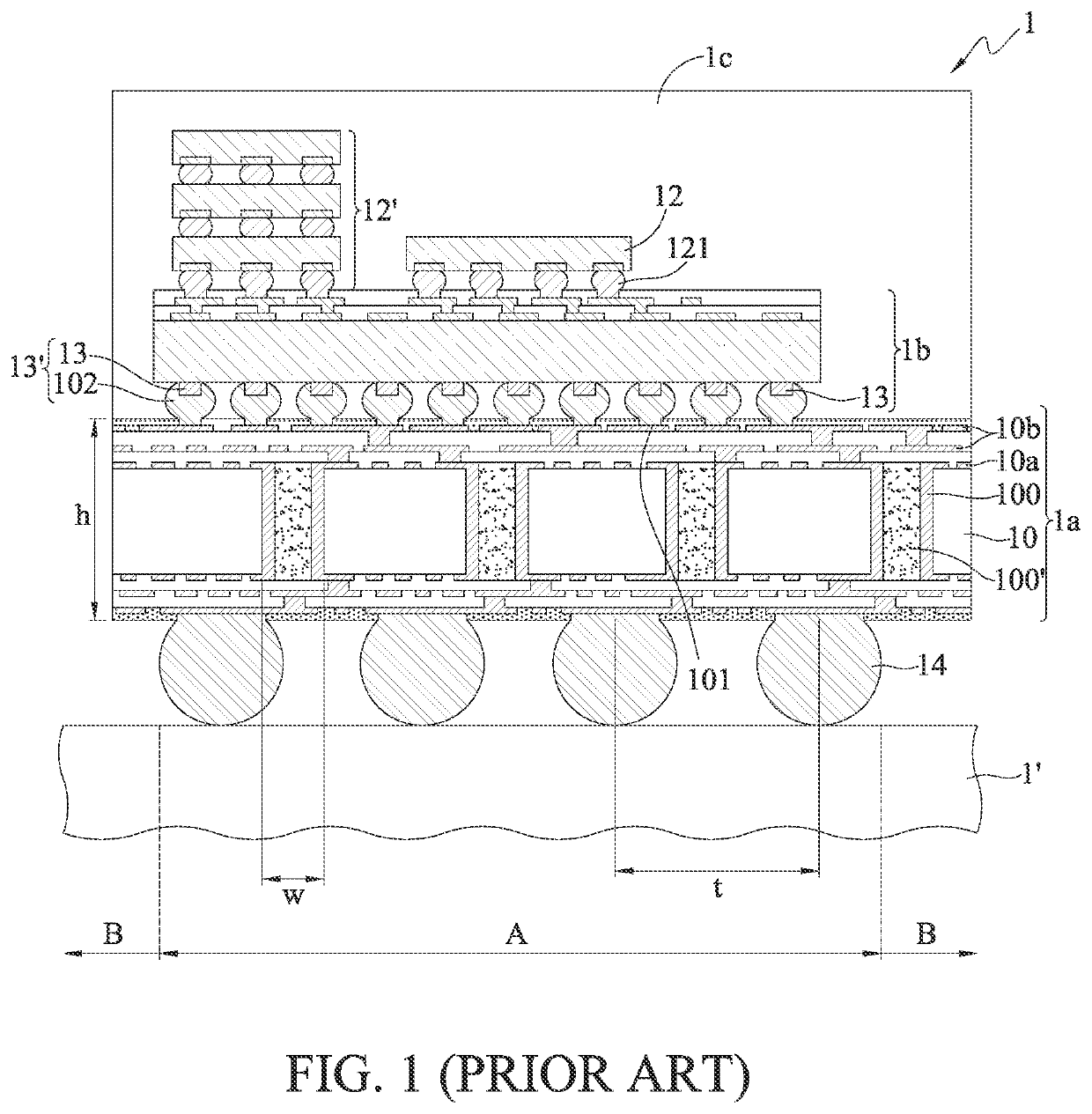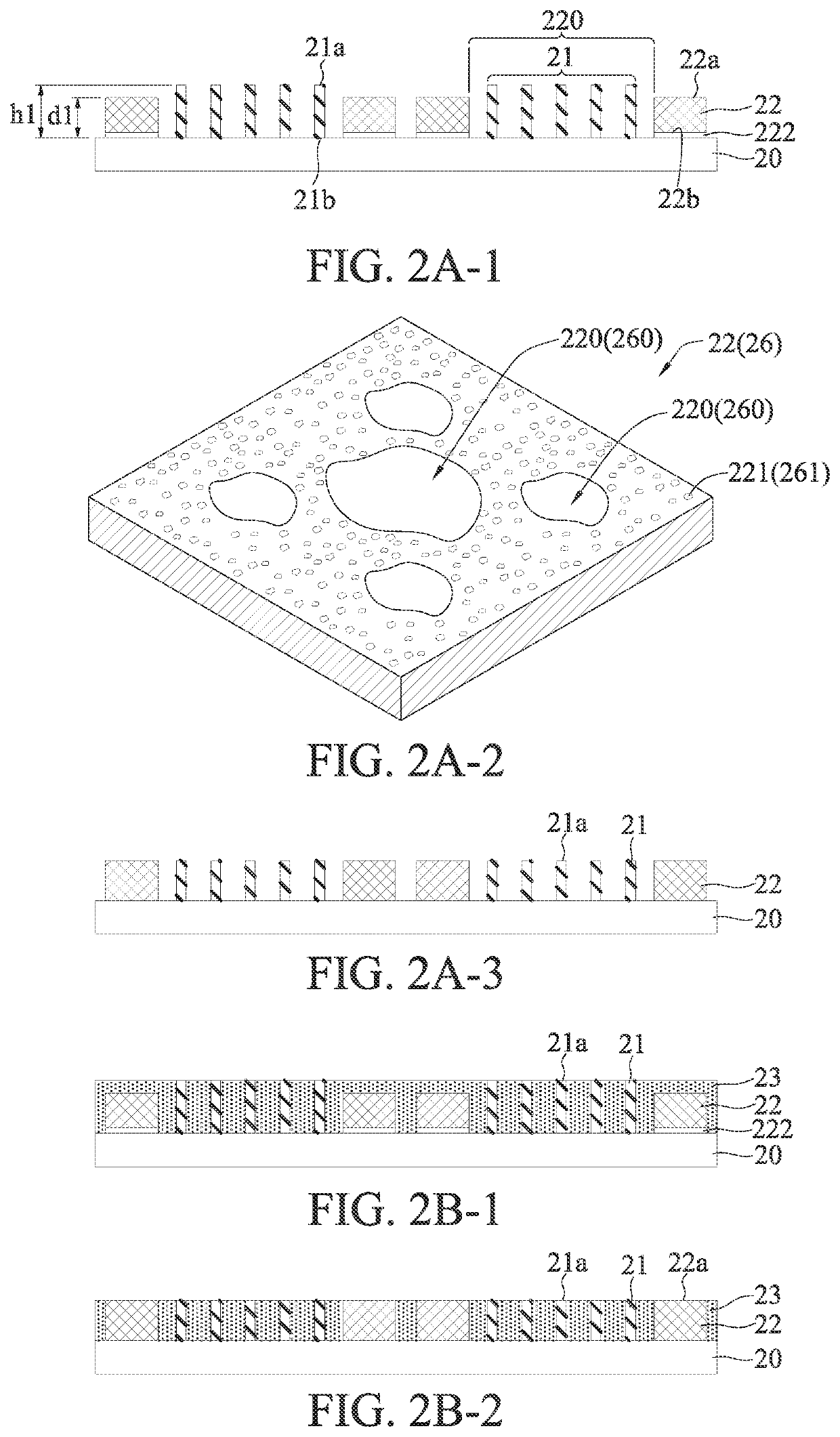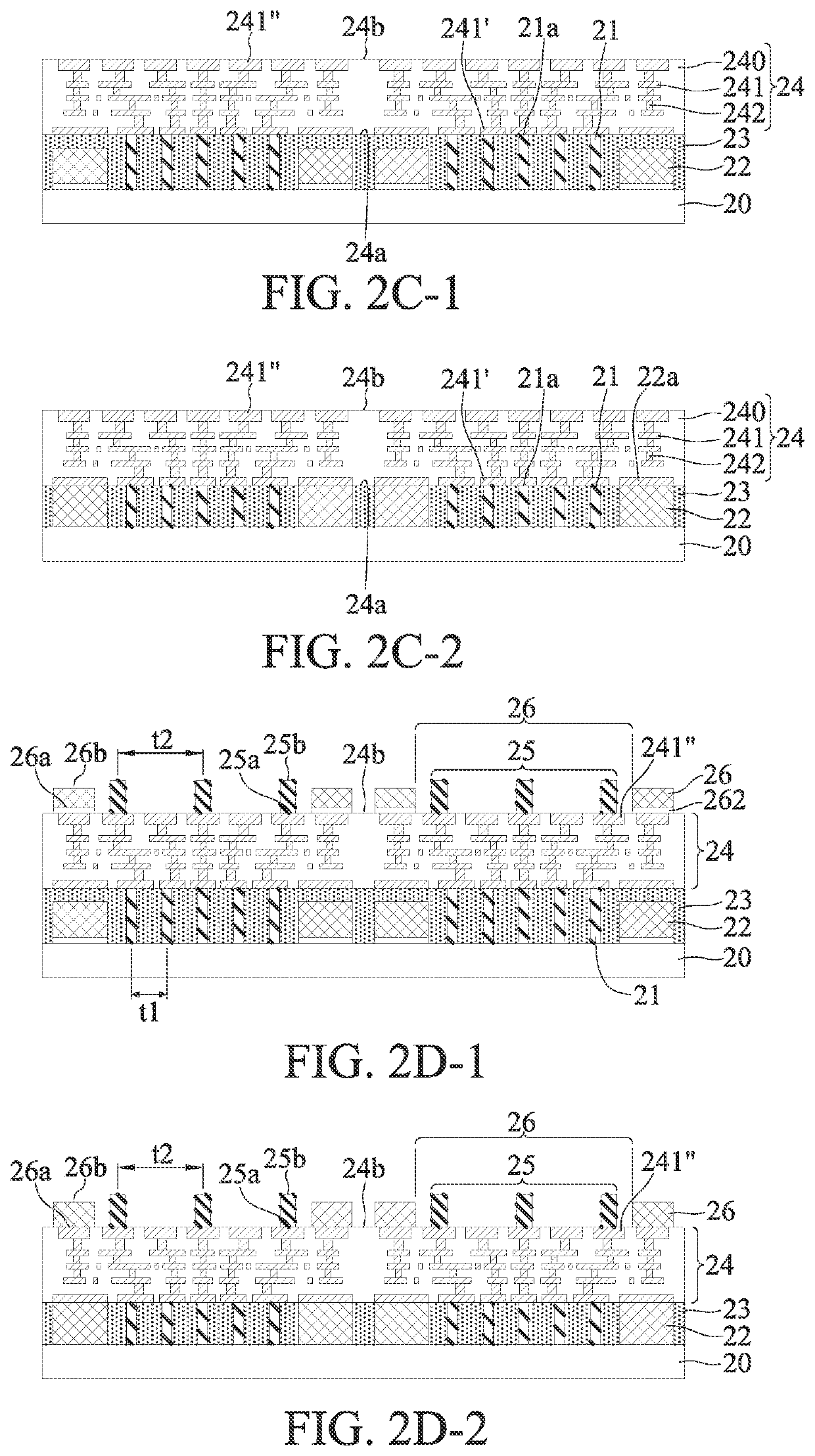Intermediate substrate and fabrication method thereof
- Summary
- Abstract
- Description
- Claims
- Application Information
AI Technical Summary
Benefits of technology
Problems solved by technology
Method used
Image
Examples
first embodiment
[0080]FIGS. 2A-1 to 2G-1 are schematic cross-sectional views illustrating a method for fabricating an intermediate substrate 2 used for flip-chip packages according to the present disclosure.
[0081]Referring to FIG. 2A-1, a plurality of first conductive posts 21 and at least a first support member 22 serving as a rigid layer are formed on a carrier 20.
[0082]In an embodiment, the first conductive posts 21 has a single layer of post body. For example, the first conductive posts 21 are metal posts made of copper, copper alloy, etc. The first support member 22 has a single layer of plate body (as shown in FIG. 2A-2) made of a conductive base material, a semiconductor base material or an insulating base material and having a plurality of mesh-shaped openings (large-sized openings 220 and small-sized openings 221). The plurality of first conductive posts 21 are positioned in at least one of the mesh-shaped openings (e.g., openings 220) of the first support member 22 for bonding with a TSI,...
second embodiment
[0156]In an embodiment, similar to the second embodiment, first post bodies 611, land bodies 610 and second post bodies 612 are sequentially formed by patterned electroplating on the carrier 20 in a stacking manner, and bonded together to form the first conductive posts 61. Since the first conductive posts 61 serve as a chip mounting side for bonding with a chip or TSI, the first conductive posts 61 need to meet a fine-pitch requirement. The multi-segment post bodies of the first conductive posts 61 facilitate to meet the fine-pitch requirement.
[0157]It should be understood that the second conductive posts 65 can also have multi-segment post bodies having land bodies 650. Third post bodies 651, land bodies 650 and fourth post bodies 652 are sequentially formed by patterned electroplating on a circuit layer of the coreless circuit structure 24 in a stacking manner, and bonded together to form the second conductive posts 65.
[0158]Further, based on the definition of the first embodimen...
PUM
| Property | Measurement | Unit |
|---|---|---|
| thickness | aaaaa | aaaaa |
| thickness | aaaaa | aaaaa |
| diameter | aaaaa | aaaaa |
Abstract
Description
Claims
Application Information
 Login to View More
Login to View More - R&D
- Intellectual Property
- Life Sciences
- Materials
- Tech Scout
- Unparalleled Data Quality
- Higher Quality Content
- 60% Fewer Hallucinations
Browse by: Latest US Patents, China's latest patents, Technical Efficacy Thesaurus, Application Domain, Technology Topic, Popular Technical Reports.
© 2025 PatSnap. All rights reserved.Legal|Privacy policy|Modern Slavery Act Transparency Statement|Sitemap|About US| Contact US: help@patsnap.com



